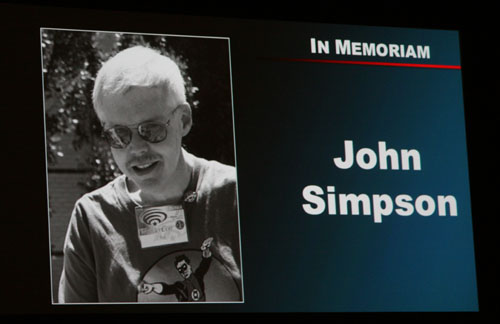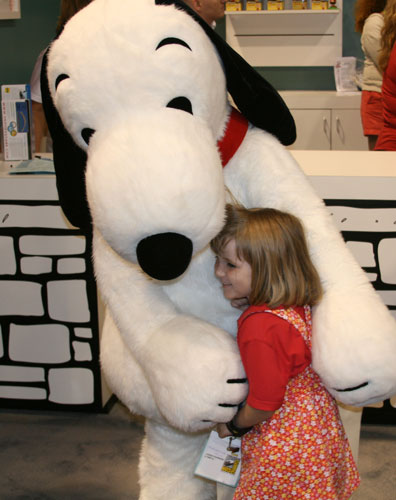I spent much of this past weekend rewiring my house for a big connectivity upgrade—the third time I did this since moving in a dozen years ago. I take a fair amount of pride in being a tech-savvy person, so before I moved a stick of furniture into my house all those years ago, I spent a couple of days making sure all the rooms were wired for both Cat 5 and BNC (a long-forgotten networking standard), along with enough Cat 3 cable to support 4 phone lines, including a fax. Yes indeed, I was a forward-thinking, technology-minded guy of the mid-1990s.
So of course, virtually every bit of that original wire is pointless now, and it’s been changed or removed bit by bit as technology changed. The BNC coax is long gone, replaced by slightly different and totally incompatible coax for satellite TV. Two different DSL lines came and went as well, replaced by various cable modem runs.
I guess I always expected the various internet and ethernet cabling to change every few years, but I sort of shocked myself when I realized that all that phone cable I’d run years before, and all those phone jacks I’d installed in all those rooms were now completely useless. As a 41-year-old geek, I’m just starting to wrap my head around the idea of a world where nobody cares where the phone jacks are, because your phones don’t plug into a jack.
Of course, this is the world where the under-30 set had been living for some time. And offhand, I can’t think of a single person under the age of 25 who answers a phone that comes mounted to a wall. They live in a world without phone jacks and land lines. It’s a strange world to us older folks, but what we would have considered crazy fringe behavior (“Waddaya mean you don’t have a real phone?“) just a couple of years ago has suddenly become the new normal.
Growing Up
It used to be, when you were a young adult moving into a new apartment, you made a lot of calls to various services: you got the power turned on, arranged for phone and cable TV installation, and called the newspaper to change your delivery address. The last one was particularly important, since reading the daily paper was both a sign of adulthood–of caring about the world around you–and a good time-killer for those four hour “installation windows” you sat through waiting for the telephone guy to eventually show up and turn on your service.
But slowly, the world changes.
Fifteen years ago, when I started Human Computing, I used to pay for three phone lines, with separate bills for long distance service. On top of this was the bill I paid to a sales answering service for after-hours reception, or for those times when all the phone lines were engaged, so that we could make sure orders were handled properly around the clock. Later, I started paying yet another bill for a cell phone which, mercifully, came bundled with unlimited long distance calling.
Over the years, the answering service went away, replaced by an online ordering system capable of doing credit card charges. An answering machine handled after hours messages, and customers starting using email for most routine queries and tech support requests. The fax machine was replaced by scanning and email, and eventually gathered dust, leading us to cut it off as well. Then VOIP (Voice Over IP) arrived on the scene, solving the long distance problem, and eliminating the need for the multiple analog phone lines. Eventually, I was left with just a single analog phone line and a cell phone.
And then one day, I realized I hadn’t actually picked up the analog phone line for a week. In the end, I decided it was time to economize and stop paying the bill for a land line we never used anymore. It was nearly unthinkable at the time, but we decided to cut the cord, and now the idea of actually having a phone installer rig up an analog phone line seems of a kind with putting in a request for two quarts of skim milk and a pint of cream with the local milkman. It’s just not done anymore.
Which brings me to that other constant in my life: the daily paper.
I was a newspaperboy as a kid (I was actually Carrier of the Year for the St. Paul Pioneer Press!) and I kept up a daily subscription from the time I was fifteen, no matter where I lived. It was, I thought, part of being an adult: in touch with my world, keeping up with current events…checking out hard drive prices at Fry’s… in short, one of life’s constants.
But then, I slowly started realizing that my half hour with the paper in the morning was turning into fifteen minutes. Then five. Then a quick leafing through looking for Dilbert and the Fry’s ads. Sometimes unread papers would pile up for days before I had to guiltily drag them out to the curb for recycling.
For some reason, the paper had stopped being essential in my life. Part of it was that I was getting my news elsewhere, primarily from the internet. Part of it was that the editorial positions of my particular local paper were increasingly (and aggravatingly) finding their way into the news sections, where I was forced to parse the reporting to find the actual story. It all got a bit wearying. And then one day, I decided to economize, letting go of my decades-old daily newspaper habit.
The newspaper carrier was obviously in shock, and for months afterward would sporadically throw newspapers in my driveway for no reason. Breakfast time also was awkward for a few days, as the old ritual of trading the sections we’d just read between my wife and I had been disturbed. And then… we simply forgot all about it. And the years went by.
…
Today, younger folks don’t buy land lines. They don’t wait for telephone installers. And they don’t worry about hauling their old newspapers out for recycling, because they don’t get the paper in the first place. You can argue whether something important was lost in the process, but I’m not going to second guess others for making the same decision I wound up making myself.
We’re probably all a little shocked by the recent closures, cutbacks, and attempts (unsuccessful so far) to find buyers for legendary big-town newspapers, affecting everyone from the Rocky Mountain News to the Seattle Post-Intelligencer to the San Francisco Chronicle. But when I start to ask myself if it’s possible that a world could function without these institutions, I get a sense of outrage, shock, dismissal… then something else.
And that something else is the same feeling I get when I look at the old, disused wall jacks I so painstakingly wired into every room of my house a little more than a decade ago.


